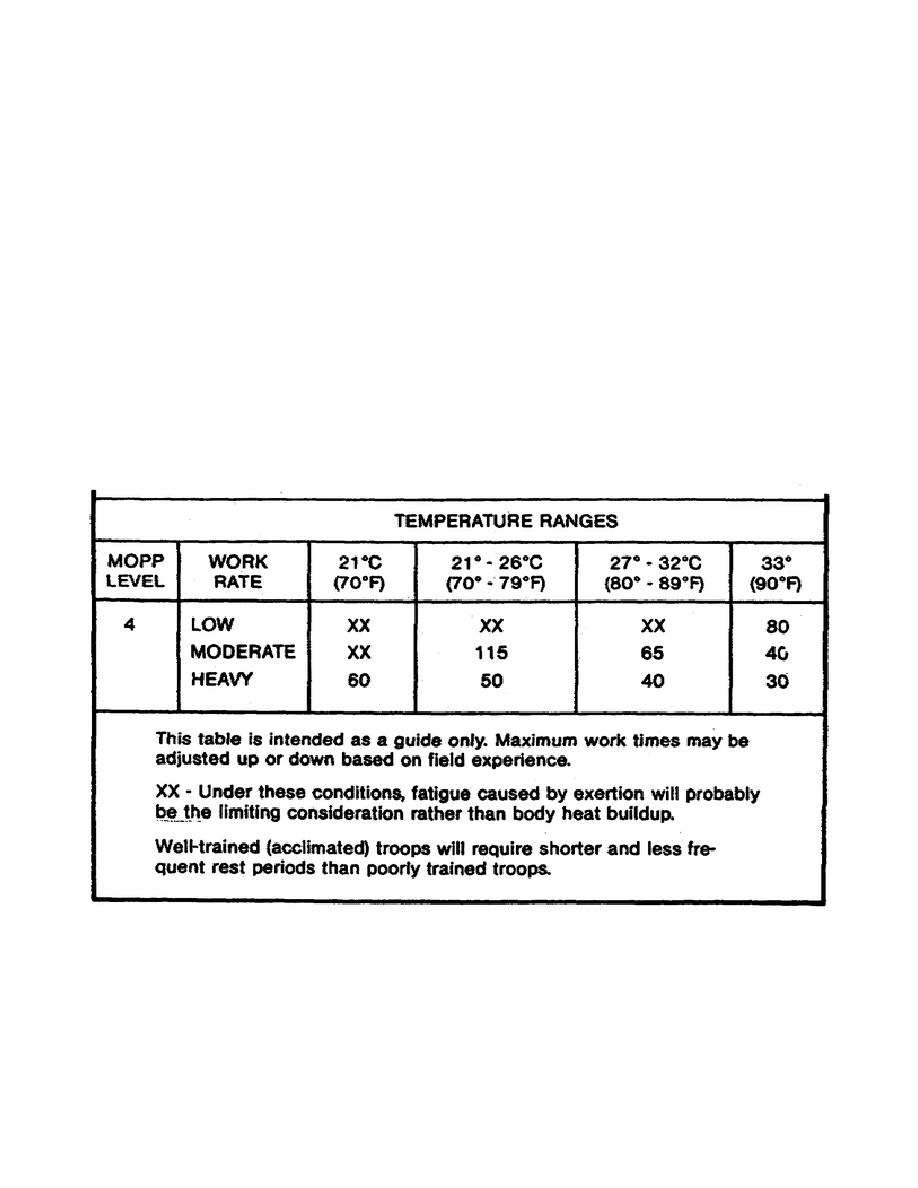
hood for five to ten minutes per hour, if possible, to minimize long-range adverse effects. For
acclimated individuals, the relief periods may be less frequent, being spaced as much as six hours apart.
As the work rate increases, troops should be able to continue their mission if they are permitted to rest
for longer periods to allow for the dissipation of built-up body heat.
In warm temperatures (21,- 19, C or 70, - 85 F), when involved in low-level work in a contaminated
area, troops should be able to continue their mission. Periods of moderate to heavy work, however,
must be significantly reduced if heat casualties are to be kept to a minimum.
In hot temperatures (29,- 38 C or 85 - 100 F), when involved in moderate or heavy work, troops can
be expected to continue the mission only if allowed longer and more frequent rest periods. Sustained,
moderate-effort tasks (e.g., scrubbing operations) can be much more taxing and may produce more heat
casualties among encapsulated troops than short-duration, high-energy tasks. The relationship between
level of effort and time of effort is, therefore, also a factor of consideration. Table 4-1 provides a table
of allowed work times with minimum casualties at different work rates.
Table 4-1. Maximum Work Times with Minimum Heat
Casualties of MOPP Level 4
4-19
CM 2506



 Previous Page
Previous Page
